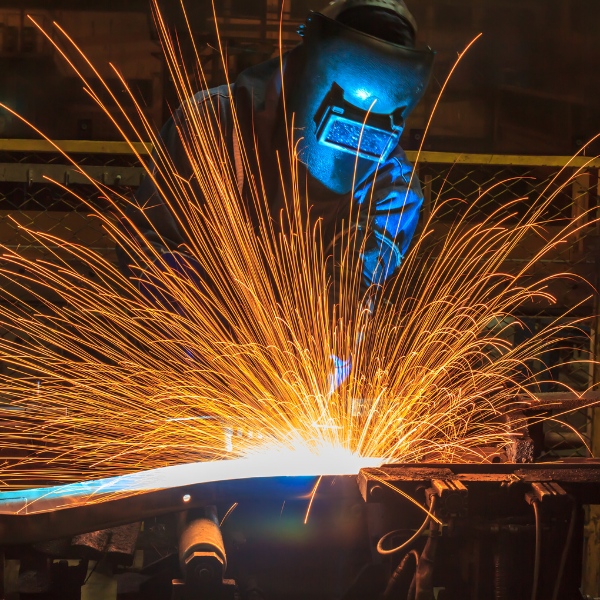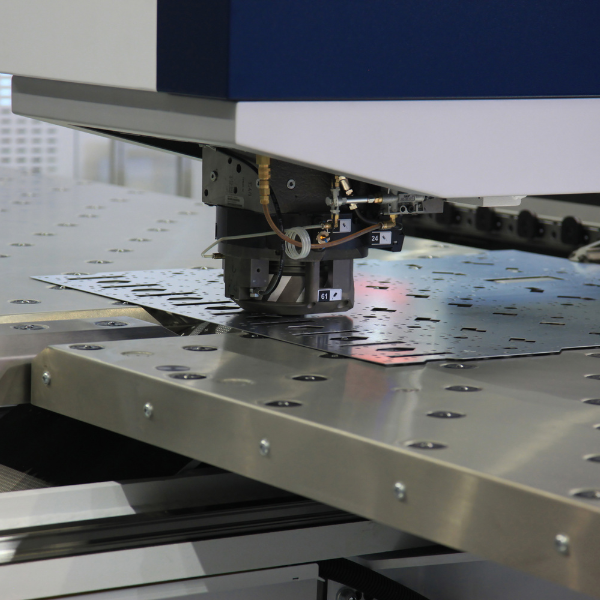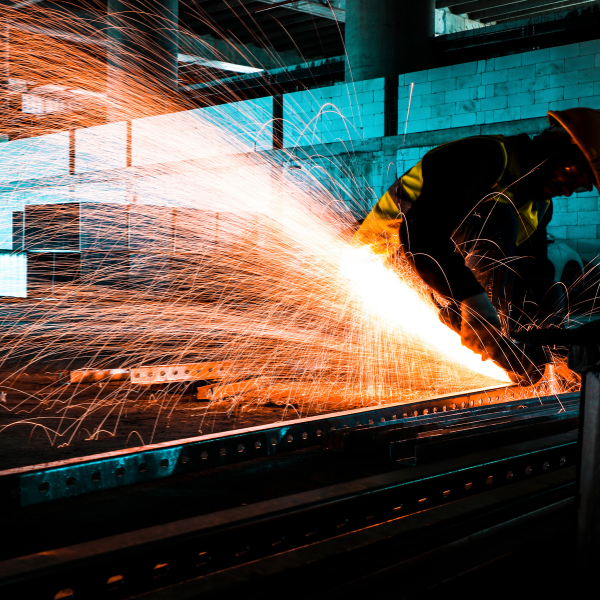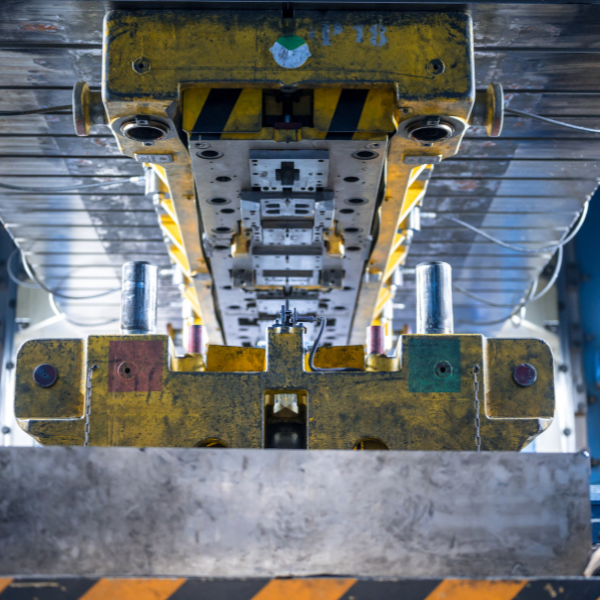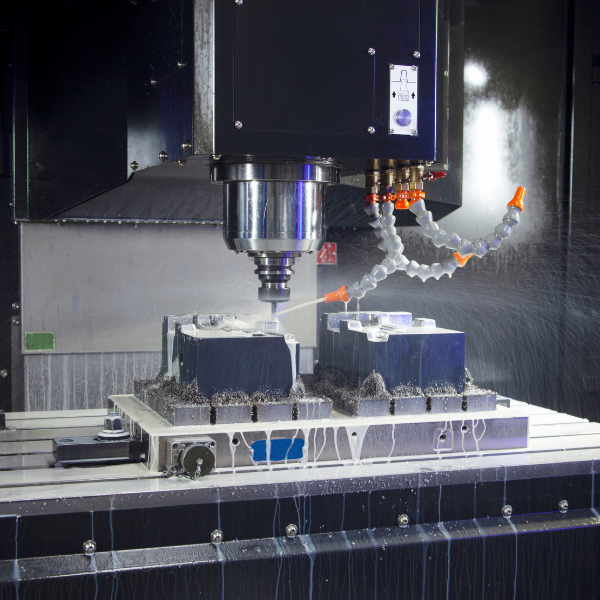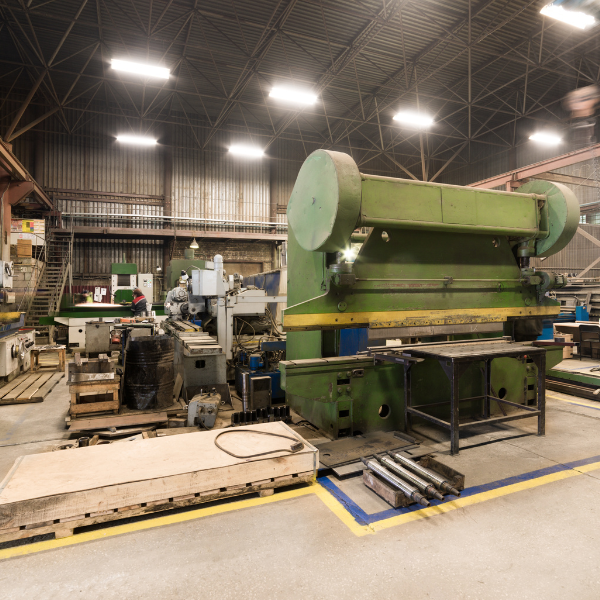Who is STAALTEK?
STAALTEK is a Leader in Steel Fabrication and Manufacturing. A company based in South Africa which Supplies the entire continent of Africa. At STAALTEK we are commited to supplying quality and precise products and services to our clients. Our products are fully customized to suit our clients unique needs and expectations.
We adhere to the requirements of the ISO 9001:2015 standard and strive to continuously improve our Quality Management System. STAALTEK enforces compliance with statutory & regulatory requirements through a process of creating awareness of these requirements.
With our consulting, designing, prototyping, and other expert services, we consistently save customers time and money. We also offer a host of additional services, all under the initiative of environmentally friendly, superior-quality work.
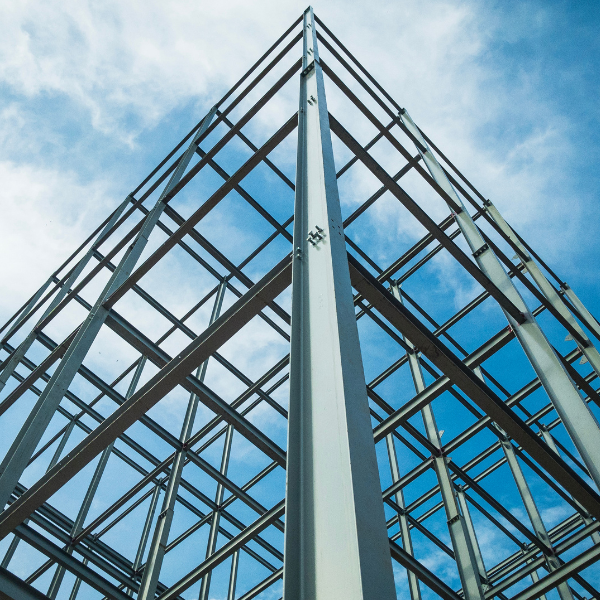
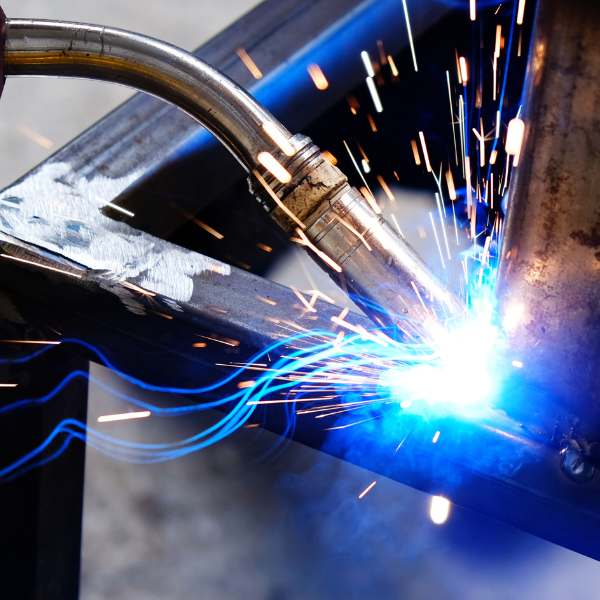
You Imagine It. We Build It.
STAALTEK specializes in steel sheet metal and structural fabrication, leveraging years of expertise and increased production capabilities to source high-grade steel directly from steel mills. By eliminating intermediary costs, we are able to offer competitive pricing to our valued customers.
With a rich legacy of over 30 years, STAALTEK is a full-service custom metal fabrication company dedicated to providing superior quality and services at equitable prices. We have been serving businesses in South Africa, delivering excellence from the design and prototyping phase to mass production, quality assurance inspections, and timely delivery of your products.
Our comprehensive range of services includes traditional metal fabrication processes such as shearing, spot welding, welding, grinding, rolling, and hardware installation. Additionally, we excel in computer numerical control (CNC) services, offering precision techniques like laser cutting, milling, turning, punching, forming, and bending. These CNC processes, guided by programmed codes, ensure the creation of products that meet highly accurate specifications.

To enhance our service offerings, STAALTEK has built a robust network of business relationships. This network enables us to provide end-to-end solutions, including powder coating, wet painting, and plating. These services, combined with our expertise, make us your ultimate destination for all your metal fabrication requirements. STAALTEK aims to be your trusted one-stop shop for top-notch metal fabrication solutions.
Steel stands as the world’s most widely used construction material due to its exceptional combination of durability, workability, and affordability. This alloy of iron contains 0.2-2% carbon by weight, making it a versatile choice for various applications.
The methods employed in steel manufacturing have undergone significant advancements since the late 19th century when industrial production commenced. Today, steel production utilizes both recycled materials and traditional raw materials such as iron ore, coal, and limestone. The majority of steel production is accomplished through two primary processes: basic oxygen steelmaking (BOS) and electric arc furnaces (EAF).
The first step in steel production, ironmaking, involves melting raw inputs of iron ore, coke, and lime in a blast furnace. This process results in molten iron, also known as hot metal, containing approximately 4-4.5% carbon and other impurities, making it brittle.
Primary steelmaking comprises two main methods: BOS and the more contemporary EAF methods. BOS involves adding recycled scrap steel to molten iron in a converter. Oxygen is blown through the metal at high temperatures, reducing the carbon content to between 0-1.5%. On the other hand, the EAF method utilizes high-power electric arcs to melt recycled steel scrap, transforming it into high-quality steel.
Following primary steelmaking, secondary steelmaking adjusts the steel composition by adding or removing specific elements and manipulating temperature and production environment. The molten steel resulting from both BOS and EAF routes is treated during this stage.
Continuous casting involves pouring the molten steel into a cooled mold, allowing a thin steel shell to solidify. The solidified strand is then withdrawn using guided rolls, fully cooled, and cut into various forms, such as slabs for flat products, blooms for sections like beams, billets for long products such as wires, or thin strips.
In the primary forming stage, the cast steel is shaped into various forms, often through hot rolling. This process eliminates cast defects and achieves the required shape and surface quality. Hot rolled products are categorized into flat products, long products, seamless tubes, and specialty products.
Finally, the steel undergoes manufacturing, fabrication, and finishing processes. Secondary forming techniques are applied to give the steel its final shape and properties, ensuring it meets the desired specifications for its intended use.
What is steel fabrication?
Steel fabrication is the process of cutting, bending, and assembling raw steel materials to create a final product. This process is commonly used in various industries, including construction, manufacturing, and infrastructure development. Steel fabrication involves several key steps:
Design: Before fabrication begins, engineers create detailed drawings and specifications for the steel structure or component. Computer-aided design (CAD) software is often used for precision.
Material Selection: The type and grade of steel used in fabrication depend on the intended application, structural requirements, and environmental factors. Common types of steel include carbon steel, stainless steel, and alloy steel.
Cutting: Raw steel is cut into the required shapes and sizes using different methods such as sawing, shearing, or plasma cutting. This step ensures that the steel pieces are prepared for further processing.
Bending and Forming: Steel components are shaped according to the design specifications. This can involve processes like press braking, rolling, or stamping to achieve the desired contours and dimensions.
Welding: Welding is a crucial step in steel fabrication where the cut and shaped pieces are joined together. Various welding techniques, such as arc welding, MIG (Metal Inert Gas) welding, and TIG (Tungsten Inert Gas) welding, are used to create strong and durable connections.
Assembly: After welding, individual pieces are assembled to create the final product. This may involve additional welding or the use of bolts and fasteners to secure the components.
Surface Treatment: The fabricated steel product may undergo surface treatments such as sandblasting, painting, or coating to enhance its appearance, protect against corrosion, or meet specific industry standards.
Quality Control: Throughout the fabrication process, quality control measures are implemented to ensure that the final product meets the required standards and specifications. This may involve inspections, testing, and documentation.
Common examples of products resulting from steel fabrication include structural steel frames for buildings, industrial machinery, bridges, pipelines, and various custom components used in manufacturing processes. Steel fabrication plays a crucial role in creating durable and reliable structures and products for a wide range of applications.
OUR SERVICES
GET IN TOUCH WITH US
Who is STAALTEK?
STAALTEK is a Leader in Steel Fabrication and Manufacturing. A company based in South Africa which Supplies the entire continent of Africa. At STAALTEK we are commited to supplying quality and precise products and services to our clients. Our products are fully customized to suit our clients unique needs and expectations.
We adhere to the requirements of the ISO 9001:2015 standard and strive to continuously improve our Quality Management System. STAALTEK enforces compliance with statutory & regulatory requirements through a process of creating awareness of these requirements.

You Imagine It. We Build It.
STAALTEK specializes in steel sheet metal and structural fabrication, leveraging years of expertise and increased production capabilities to source high-grade steel directly from steel mills. By eliminating intermediary costs, we are able to offer competitive pricing to our valued customers.
With a rich legacy of over 30 years, STAALTEK is a full-service custom metal fabrication company dedicated to providing superior quality and service at equitable prices. We have been serving businesses in South Africa, delivering excellence from the design and prototyping phase to mass production, quality assurance inspections, and timely delivery of your products.

Our comprehensive range of services includes traditional metal fabrication processes such as shearing, spot welding, welding, grinding, rolling, and hardware installation. Additionally, we excel in computer numerical control (CNC) services, offering precision techniques like laser cutting, milling, turning, punching, forming, and bending. These CNC processes, guided by programmed codes, ensure the creation of products that meet highly accurate specifications.
To enhance our service offerings, STAALTEK has built a robust network of business relationships. This network enables us to provide end-to-end solutions, including powder coating, wet painting, and plating. These services, combined with our expertise, make us your ultimate destination for all your metal fabrication requirements. STAALTEK aims to be your trusted one-stop shop for top-notch metal fabrication solutions.




Steel stands as the world’s most widely used construction material due to its exceptional combination of durability, workability, and affordability. This alloy of iron contains 0.2-2% carbon by weight, making it a versatile choice for various applications.
The methods employed in steel manufacturing have undergone significant advancements since the late 19th century when industrial production commenced. Today, steel production utilizes both recycled materials and traditional raw materials such as iron ore, coal, and limestone. The majority of steel production is accomplished through two primary processes: basic oxygen steelmaking (BOS) and electric arc furnaces (EAF).
The first step in steel production, ironmaking, involves melting raw inputs of iron ore, coke, and lime in a blast furnace. This process results in molten iron, also known as hot metal, containing approximately 4-4.5% carbon and other impurities, making it brittle.
Primary steelmaking comprises two main methods: BOS and the more contemporary EAF methods. BOS involves adding recycled scrap steel to molten iron in a converter. Oxygen is blown through the metal at high temperatures, reducing the carbon content to between 0-1.5%. On the other hand, the EAF method utilizes high-power electric arcs to melt recycled steel scrap, transforming it into high-quality steel.
Following primary steelmaking, secondary steelmaking adjusts the steel composition by adding or removing specific elements and manipulating temperature and production environment. The molten steel resulting from both BOS and EAF routes is treated during this stage.
Continuous casting involves pouring the molten steel into a cooled mold, allowing a thin steel shell to solidify. The solidified strand is then withdrawn using guided rolls, fully cooled, and cut into various forms, such as slabs for flat products, blooms for sections like beams, billets for long products such as wires, or thin strips.
In the primary forming stage, the cast steel is shaped into various forms, often through hot rolling. This process eliminates cast defects and achieves the required shape and surface quality. Hot rolled products are categorized into flat products, long products, seamless tubes, and specialty products.
Finally, the steel undergoes manufacturing, fabrication, and finishing processes. Secondary forming techniques are applied to give the steel its final shape and properties, ensuring it meets the desired specifications for its intended use.

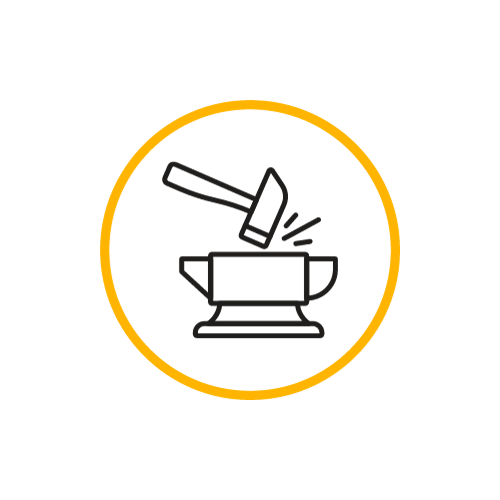
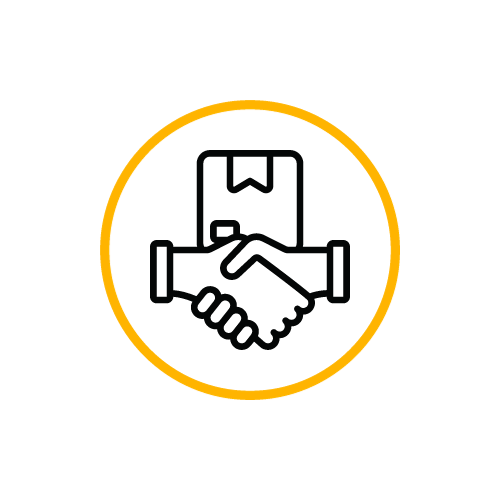
OUR SERVICES
